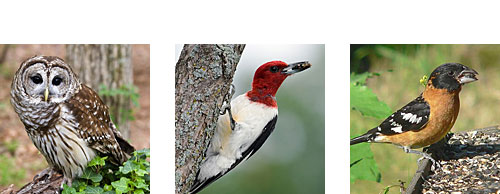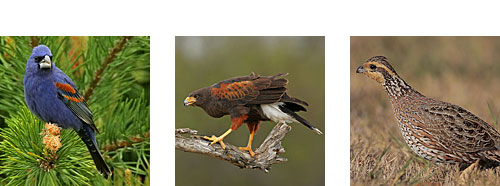
Many birders enjoy keeping one or more lists of the birds they have seen. Keeping lists of birds observed can help one learn about bird distribution and seasonal patterns. It also feeds the urge many people have to collect things. Because wild birds cannot actually be collected, keeping a list of birds you have seen provides a legal and fun alternative. There is always a measure of excitement when a new species is added to a personal list. The list might be of the birds seen in your own backyard, or it may be a life list, which is a list of all the birds you have seen since you started bird watching.
On this page
Different Kinds of Lists
Like other aspects of bird watching, listing can be very casual or very competitive, and either kept personal or publicly shared and compared. Here is a list of lists, so to speak, that some people keep. You may keep none or one or all of these lists, or even create your own category.
1. Yard list – all the birds you have seen on your property
2. Year list – all the birds you see in a calendar year (this list can also be subdivided into world, country, or state categories, if you travel)
3. State list – all the birds you have seen within a state (many avid birders who travel keep several state lists)
4. Life list – all the birds you have seen since you started bird watching
5. Big day list – the maximum number of species you have seen in 24 hours
6. The Big Sit – a worldwide competition to see who can see the largest number of species from within a 15 foot radius circle in a 24 hour period.
7. Photo list – the number of bird species you have photographed
8. Zoo list – all the birds you have seen in zoos
9. Television or movie list – all the bird species you have seen or heard on TV.

Check out the old Adam 12 police series to add Bachman’s sparrow to your TV list. This is an interesting (that’s a nice way of saying inaccurate) bird occurrence, since Bachman’s Sparrow frequents the piney woods of the southeastern United States, not suburban LA where the show takes place. Hollywood often makes such mistakes, but only avid birders ever realize it. You will also soon notice how many shows use the scream of a Red-tailed Hawk, even when showing something else, like a soaring Turkey Vulture (that’s a two-for-one on your list if you spot it!).
10. Street names that are bird names
And the lists go on and on, many with specific rules of etiquette for how they should be counted. Some members of the American Birding Association, (about 20,000 strong), are very competitive in their listing and compete for the top state list, for the top United States list, for the top Big Day list, for the top world list, etc. Most bird watchers, however, are content to keep a simple backyard list and/or a life list.
Record keeping
If you decide to keep a list of the birds you see, there are a few things to keep in mind. When recording a species you have seen for the first time, it is standard procedure to record the common name, the date seen, and the location. Special notes regarding identification, weather conditions or unusual plumage are also often useful for later reference.
Many beginners maintain their list by recording their sightings in their favorite field guide. This is a handy approach, but more than one bird watcher has managed to lose a field guide, and also their life list at the same time. If you decide to use a field guide for maintaining your list, you may wish to purchase a second guide for taking into the field. The second guide can be from a different publisher, and will perhaps offer different, useful identification tips, providing you with a second identification resource. The book containing your life list can then be stored at home.
The use of printed field checklists or a state checklist safely stored at home can make it easier to maintain and review your list.
From time to time, scientists reclassify one species into two, or two species into one, to reflect a more thorough understanding of relationships between species. These changes can occasionally either increase or decrease your list totals without your even leaving your house!

Free listing service from Birdzilla
Birdzilla also makes it easy for you to maintain a life list and two additional lists, directly on-line. Simply go to the Life List page to set up your list. It is free, compliments of Birdzilla.
If you decide to become even more serious about keeping lists of the birds you have seen, there are several PC-based packages that make it easy to create and manage your lists.
Listing Software:
The serious side of listing
Keeping a list of the birds you see can be a lot of fun. Maintaining information, such as when and where a bird was seen, is valuable information for scientists studying such topics as population trends and range expansion and contractions.
A good place to record your sightings is on eBird. A project of the Cornell Lab of Ornithology. Birders from all over the country have reported millions of sightings. You are encouraged to report your sightings on eBird, even if the birds are regular visitors to your own yard.
Many people report the birds they see every day.The sightings, along with date and location information, helps create a clear snapshot of bird locations and populations at any given time, as well as providing information necessary to study changes over time.

